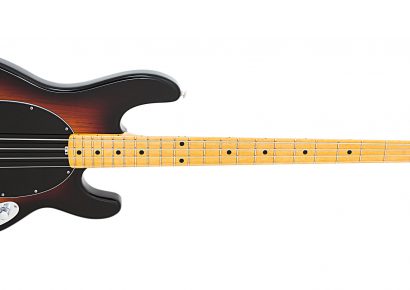Material
DuPont Delrin is a modern plastic that produces a warm sound, provides durability and a matte surface for greater grip. It’s used to make Dunlop’s classic Tortex line, which was the pick of choice for much of the ‘90s grunge scene; Kurt Cobain, Pearl Jam and Soundgarden to name a few. Nylon picks, on the other hand, are comparatively thinner and therefore produce a brighter sound, while providing more malleability, and less slippage with textured grips. The Herco Flex is a nylon pick famously used by Jimmy Page and Gene Simmons. Stone, metal and other harder materials all lend themselves to a more potent string attack, and bolder tones.
Thickness
Thinner picks that range from .40 to .60 mm project a lighter sound, a more trebly tone, and are ideal for acoustic playing – the bend and slight deflection after striking the strings a key part of that nice acoustic twang. Picks in the range of .60 to .80 mm produce greater bass and midrange tone than thinner picks, and are therefore more suited to rock rhythm and lead. For a sound that has a greater girth – that is more-rounded with greater volume – anything over .80 will work. And then there’s the bottom-heavy 1.5 mm plus range that lends itself to the weighty side of jazz and impactful metal.
Shape
A pointier, sharper tip brings forth greater precision and accuracy, and is the central shape of jazz-oriented picks. The teardrop-shaped Dunlop Ultex Jazz III picks, for instance, are designed for playing lead, and striking single notes with speed. The equilateral pick offers up the use of each corner, while the fin shape pick can be applied in two different ways – either using the blunt end for a full bodied chord, or the shark-like crevices for a harsh, scratching pick scrape.
The material, thickness and shape of a guitar pick are all factors that should be considered when deciding what’s best for you’re playing – each can be the difference in capturing your desired tone, or nailing your style and genre.







